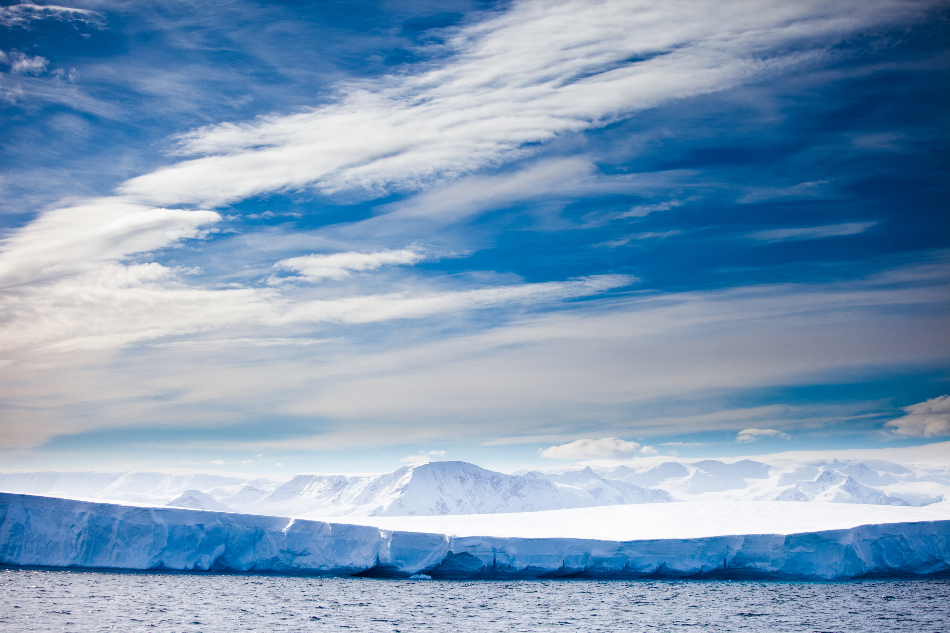
Image Credit: Li Hui Chen / Shutterstock.com
European Space Agency (ESA) satellites have recently captured significant ice calving off the Pine Island Glacier in Antarctica. This has leading scientists concerned that the glacier, believed to the fastest-melting ice-stream, could soon completely break down, which could cause a chain reaction of catastrophic events around the world.
With the potential to reshape coastlines around the world and cause a four-foot rise (1.2 meters) in the sea-levels across the globe, continual observation of Antarctica’s melting glaciers has been on the ESA’s radar since October 2019. Back then, Copernicus Sentinel-1 and Sentinel-2 satellites revealed giant cracks in the Pine Island Glacier.
Due to the remoteness of the glacial locations, the Copernicus Sentinel satellite missions take up a prime position for observing Antarctic glaciology – revealing the rates of glacial retreat in Antarctica. Together with the nearby Thwaites glacier, Pine Island links the West Antarctic Ice Sheet with the ocean and also releases large quantities of ice into the seas.
Accelerating Ice Breaks
However, the current rate of ice being discharged into the oceans from Pine Island is accelerating and the most recent break released a slew of fresh icebergs into the Amundsen Sea. The ice velocity of Pine Island Glacier has reached values which surpass 10 m a day – many of the calving events have almost instantly transformed the shape and position of the ice front.
Pine Island Glacier spawns piglets
The ESA recently released a video compiled from 57 images which shows the recent break-up of ice which exceeds 120 square-miles of (about 310 km2), an area twice the size of Washington DC: The largest piece is being referred to as B-49 by ESA researchers.
The sudden surge of calving events at the Pine Island Glacier could serve as the prelude to a more cataclysmic series of events triggered by climate change. Just last week Antarctica experienced its hottest day on record as temperatures hit 65 degrees Fahrenheit which further indicates dramatic changes on the continent have commenced.
What is unsettling is that the daily data stream [from satellites] reveals the dramatic pace at which climate is redefining the face of Antarctica.
Mark Drinkwater, Senior Scientist and Cryosphere Specialist, ESA
Rising Sea Levels
Glaciers are persistent bodies of ice that constantly move under their own weight meaning that they appear to flow like rivers, albeit very slowly, and can release icebergs into the ocean. Pine Island has been spewing so much ice into the ocean that since 2012 it has had the largest impact on global sea levels.
What’s more is that significant calving events are becoming more common in the region which is another sign of the glacier’s instability. “The events of the past five to 10 years seem to be exceptional for the area compared to the retreat in the past 70 years,” said Dr. Bert Wouters, a satellite remote sensing expert at TU Delft in the Netherlands and who is also closely monitoring the events at Pine Island Glacier and nearby Thwaites.
Stepping-up Efforts
While iceberg calving is a natural occurrence, the sudden acceleration of the phenomena is what has scientists concerned. According to NASA, calving events would tend to take place every four years, however, over the past ten years such events have occurred every two years. Hence why institutions and space agencies are stepping-up their efforts to monitor the region.
The West Antarctic Ice Sheet has naturally fluctuated in size and shape over time, yet it often retains some sort of stable condition in the region. However, over the past century the variances have become more unstable which coincides with increases in greenhouse gases caused by human activity. Continual collapsing of the West Antarctic Ice Sheets could change coastlines around the world and as sea levels rise, coastal cities and towns would be significantly affected. Thus, researchers and scientists involved in the observations of the Antarctic region are calling to policymakers and governments alike to step-up their efforts and help slow down the imminent climate catastrophe.
Disclaimer: The views expressed here are those of the author expressed in their private capacity and do not necessarily represent the views of AZoM.com Limited T/A AZoNetwork the owner and operator of this website. This disclaimer forms part of the Terms and conditions of use of this website.